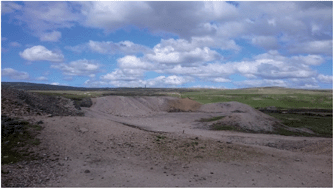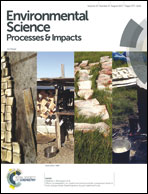Understanding the mobilisation of metal pollution associated with historical mining in a carboniferous upland catchment†
Abstract
Point and diffuse pollution from metal mining has led to severe environmental damage worldwide. Mine drainage is a significant problem for riverine ecosystems, it is commonly acidic (AMD), but neutral mine drainage (NMD) can also occur. A representative environment for studying metal pollution from NMD is provided by carboniferous catchments characterised by a circumneutral pH and high concentrations of carbonates, supporting the formation of secondary metal–minerals as potential sinks of metals. The present study focuses on understanding the mobility of metal pollution associated with historical mining in a carboniferous upland catchment. In the uplands of the UK, river water, sediments and spoil wastes were collected over a period of fourteen months, samples were chemically analysed to identify the main metal sources and their relationships with geological and hydrological factors. Correlation tests and principal component analysis suggest that the underlying limestone bedrock controls pH and weathering reactions. Significant metal concentrations from mining activities were measured for zinc (4.3 mg l−1), and lead (0.3 mg l−1), attributed to processes such as oxidation of mined ores (e.g. sphalerite, galena) or dissolution of precipitated secondary metal–minerals (e.g. cerussite, smithsonite). Zinc and lead mobility indicated strong dependence on biogeochemistry and hydrological conditions (e.g. pH and flow) at specific locations in the catchment. Annual loads of zinc and lead (2.9 and 0.2 tonnes per year) demonstrate a significant source of both metals to downstream river reaches. Metal pollution results in a large area of catchment having a depleted chemical status with likely effects on the aquatic ecology. This study provides an improved understanding of geological and hydrological processes controlling water chemistry, which is critical to assessing metal sources and mobilization, especially in neutral mine drainage areas.



 Please wait while we load your content...
Please wait while we load your content...